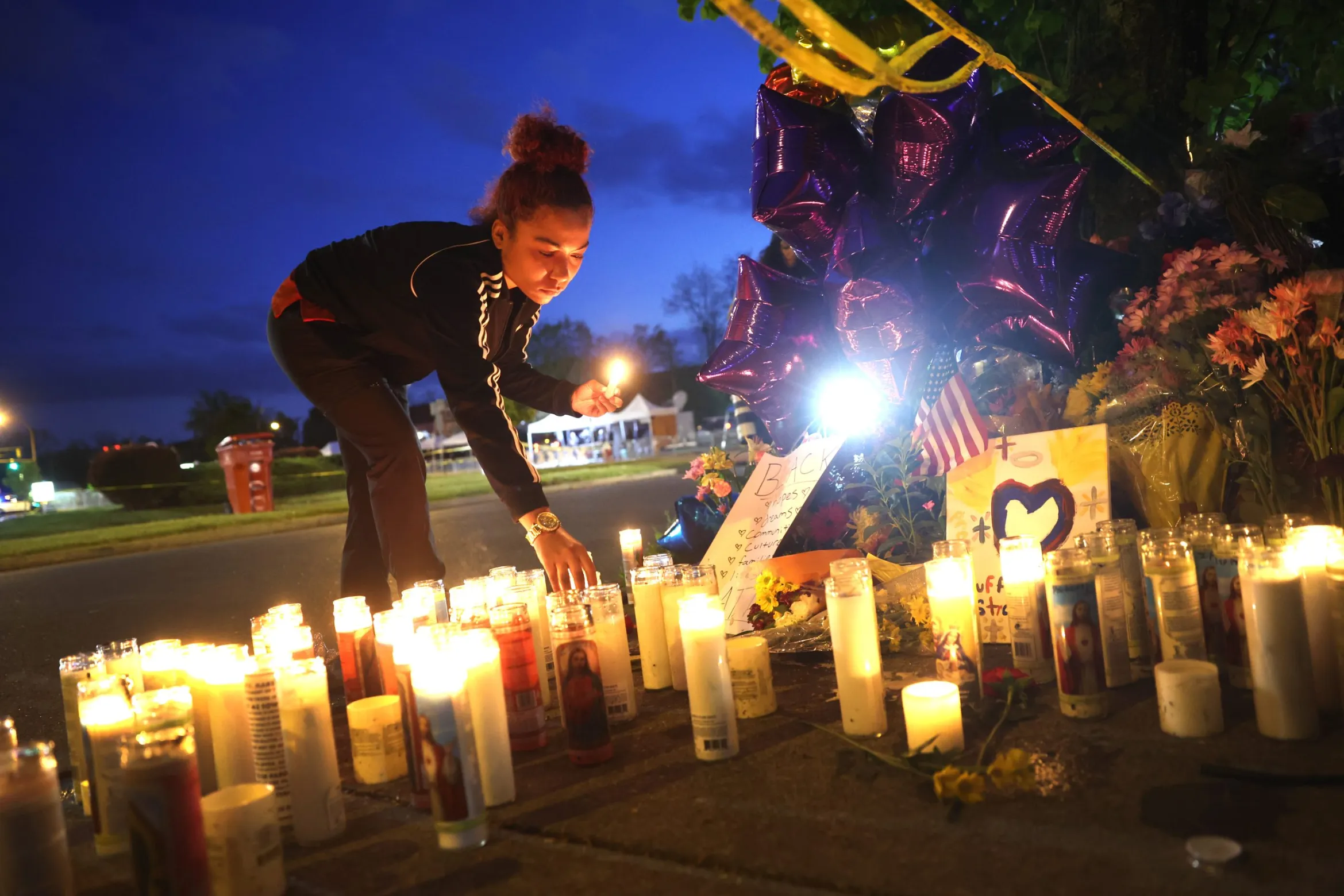We can honor the lives of those who have been killed by abolishing the structures that allowed for their deaths
Prism, May 17, 2022
“No longer will the revolutionary segment of the Black colony of Buffalo remain passive and silent while our youth, women, and children are killed, brutalized, kidnapped, and robbed by the Gestapo pigs and vicious SS troops … running amok in our community.” – Martin Sostre
How many massacres are enough? This absurd question outlines the depravity of a condition that’s so woefully infuriating. Over the last decade (and certainly before then, too), we’ve seen enough killings by individual white supremacists and the larger apparatus of state violence to understand how the two work in tandem. The latest slaughter carried out in Buffalo by a white 18-year-old named Payton Gendron follows the tradition of several that came before it. Murdering Black people is a socially acceptable expression in an anti-Black society. That’s why we’re here again, and that’s why this keeps happening and has happened for as long as every Black person alive right now can remember. The state enacts this violence on us every single day, and we’re lucky if it makes a blip on anyone’s radar. Gendron was an individual, but he is the product of the U.S. He was a police officer who didn’t have a badge yet. He was a soldier who hadn’t officially enlisted. His service was unofficial, and that’s all that makes this a tragedy for far too many.
During times like this, it’s important to understand that Black people’s deaths often become opportunities. After a white supremacist made an ideological statement through his attack, many will gather around the dead with exploitative intentions. Rather than stopping these crises, much like the nonprofit-industrial complex, the problem becomes a driving force for opportunists. We’ll see people push their respective lines, whether organizational, party politics, or policy responses. These rolling disasters and the gravesites they produce become a gathering place where everyone can say, “This is why I’m right,” instead of, “This is why everything’s wrong.” The difference between the two is the sincere observation of the failure of so much around us.
The fascist far-right wants an all-out war. They are not fixated on electoral victory like the liberals who facilitate their growth by making everything into a political honor contest. The right has made it abundantly clear that they want to use violence to destroy their enemies in open conflict. Gendron, the Jan. 6 attack, Dylann Roof, and Kyle Rittenhouse are just a few indicators of this. They know elections and protests are not their only options, and plenty of them are willing to kill for their ideas. Liberals and the Democratic Party are not an obstacle nor in opposition to them, and the various factions masquerading as “the left” have not built a substantial force to counter what we’re up against. Herein lies much of the problem: everyone seems to know what’s best for “the people,” but those very people keep dying. A noteworthy radical from Buffalo has been of great help to me in processing all of these challenges.


